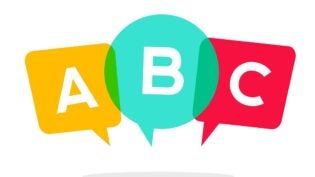Crowdsourcing for Small Business: Genius or Madness?
By: Marsha Kelly

Crowdsourcing has been both a success and a failure for my business. I love my new logo design but am disappointed that I failed to raise startup funds. Benefit from my experience and get valuable crowdsourcing tips in this article.
Throughout this process, I’ve learned valuable lessons on how to increase the likelihood of positive results, with less stress and hassle, for utilizing the crowd both for your graphic logo designs and startup funding. The difference is in how you manage your projects and expectations. Let’s take a look at how you can better control the power of the crowd and benefit from its speed, productivity, and talent.
Crowdsourcing is a way of getting services, ideas and content, usually online, from an international group of people—i.e., the crowd. The most popular uses of crowdsourcing include design work, language translation, business innovation, photography, product development, software testing and web development.
To get started you need to create a profile on a site such as 99designs (design) or Kickstarter (funding) describing your needs and then once activated, or accepted at Kickstarter, the public (the crowd) will begin contributing to your project.
I’m afraid I have to disagree with naysayers, and ad agencies who are losing clients daily, that crowdsourcing is unethical. In fact, I think it is a very democratic and inclusive way of allowing people regardless of their training or location to earn an honest living with their graphic talents.
Similarly, for crowdfunding, all your investors agree to these terms which state that their investment has risks.
What I learned from launching a logo design contest
As a former owner of both an ad agency and marketing consulting firm, I have decades of experience buying graphic design. I know that the traditional process of hiring independent artists can sometimes be expensive, slow and fraught with difficult personalities.
As such, I was intrigued by the new design contest business model and wanted to try it for a new website’s logo design. However, I was nervous about hiring the “crowd” and worried that perhaps I would get low quality work while wasting both my time and money.
I took a chance and launched a logo design contest at 99designs, and was pleasantly surprised and impressed with both the quality and quality of logo designs submitted. The budget-friendly cost and fast delivery made the whole process a win-win. Read more about my experience using 99designs.
Helpful tips to make your crowdsourcing process go faster, smoother and with better results.
- Give Clear Directions – Submit a visual logo design brief, not text only, since graphic artists better understand images than words. Good crowdfunding sites have a design questionnaire that includes visual elements such as colors, styles, and pictures.
- Include Usage and Goals – Tell our designers about your company goals (open a new store, reach younger customers, rebrand a family firm) and also how you plan to use your logo (in print, digital and signage).
- Communicate Early and Often – As soon as you receive logo ideas give constructive feedback about what you like and don’t like. This will enable your designers to refine their submissions to serve your needs and preferences best.
- Modify Design Brief – If most of the designs submissions are wrong, modify your design brief. Either edit your order or, if you need help, contact customer support who will help update your brief and also extend the contest length. Once your modifications are complete, notify all your contest participants using the site message system.
How I Will Improve My Next Crowdfunding Project
My crowdfunding project failed because I was both unrealistic in total funding goals and not properly prepared. Here’s what I will do for my next product campaign instead.
- Grow your social media followers – 35% of all donations will come through social media contacts. Build your followers so that they can ask their followers to fund your projects. While Twitter and Facebook are the easiest to both identify and connect with your target market, niche communities on sites like Reddit and LinkedIn have much higher conversion rates.
- Be realistic about your funding goals so that you will meet your goal and then be awarded the funds. If you set your goal too high, you may not reach it, and then will lose all the money you raised.
- Test your product idea with your target group before you start a crowdfunding campaign. This was my big mistake; I wish I had done more market testing before setting up my Kickstarter project. Learn about your potential customers and their perception of your products to be sure that they will be interested in your funding campaign.
- Think about your goals first and then develop a working plan. Are you crowdfunding to validate your business idea, getting investments or simply getting pre-orders? All are ways to use crowdfunding for your business. Keep your primary goal in mind.
Pros and Cons of Crowdsourcing for Small Business Owners
PROS
- Increases Odds of Success – Due to the sheer number of people involved in your project you increase the likelihood of a good project outcome.
- Maximize Your Options – Tap into the talent of a large group of people with fresh approaches and new ideas.
- Knowledge Sharing – People from other countries and cultures bring fresh new insights and talents that will help you stand out from your competitors.
- Cost Reductions – Budget friendly due to the equal distribution of labor vs. the more expensive ad agency or independent artist.
- Saves Time – Due to faster digital workplace coupled with the competitive spirit motivating people to work faster, you will get results quicker. Utilizing international time zones to your advantage, you will have workers toil while you sleep to wake up to new designs. Also, you get faster results by spreading the work across many teams increasing productivity.
- Creates Buzz – for our product and increases your network of contacts including customers, brand ambassadors, employees, product testers, vendors, investors and collaboration partners.
CONS
- Project Management – Can become complicated to manage so many people. That’s why I recommend reputable sites, such as 99designs and Kickstarter, that have easy to use online interfaces to interact with your crowd.
- Risk Intellectual Property – Because sites are public, and your crowd does not sign non-disclosure agreements your concepts are at risk of theft and infringement. Do not disclose your trade secrets online.
- Failure to Complete Projects – If you do not get a logo you love 99designs offers a full money back guarantee, this is why I choose to take a chance on their design contest as opposed to other sites that offered limited or no refunds.
- Quality can be compromised if your contributors are not experienced nor well informed. Only use reputable sites with positive reviews.
- Loss of Privacy since most crowdsourcing sites are public your competition can see your plans. Don’t post all the details publically, only submit an outline, then when you connect with promising freelancers send the full your package. Or you can register with a fake company name.
Now that you have learned from my mistakes what not to do and what to do instead. Go forth my fellow entrepreneurs and get the best from the crowd for your business success.












